Are you looking for increased accuracy, muzzle control and quick target acquisition with your favorite rifle? Modifications to the stock could make a big difference.
Venturing to Africa for a mix of dangerous and plains game, I had the good fortune to use several rifles that had been modified for fit, feel and quick aiming. Hunting cape buffalo, leopard, hippopotamus and other dangerous critters often means swift and unexpected shots. There is no time for adjusting the buttstock on your shoulder or moving your head up and down to try and see clearly through an optic. Time is of the essence, and a rifle that slides to your shoulder and gets you on the mark is essential.
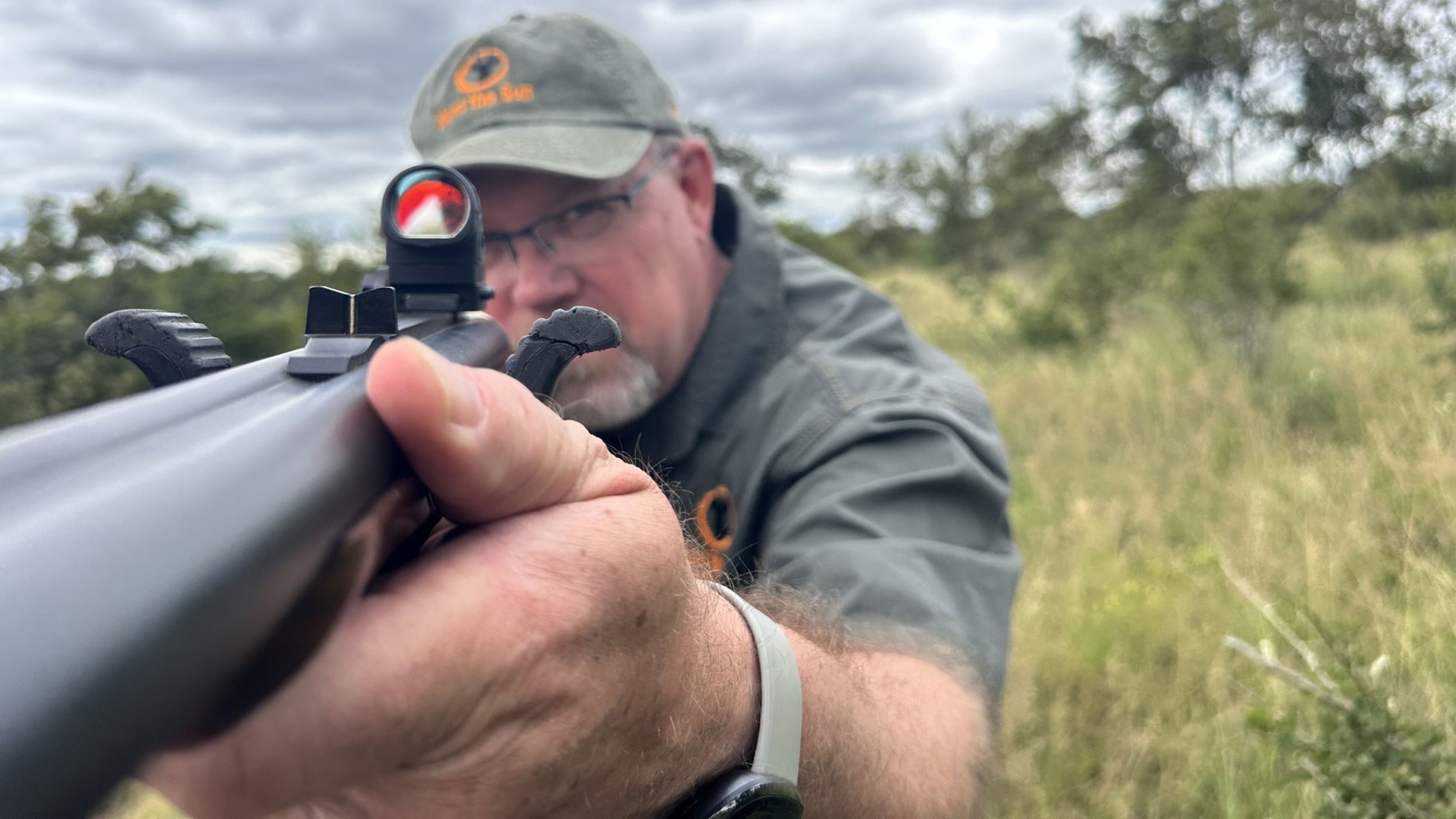
Mike Birch with Hunt the Sun has a collection of beautiful rifles ready to pursue any big game. I shouldered several options and found them to be intuitive and comfortable. A Krieghoff Classic in .470 Nitro Express would be the rifle for hunting big and dangerous species on my list. The double gun was heavy, but mounted on the shoulder without effort. The weight would help offset recoil. More importantly, the view down the barrel aligned perfectly with the target. The red dot in the Trijicon SRO centered in the sight housing without looking for it.
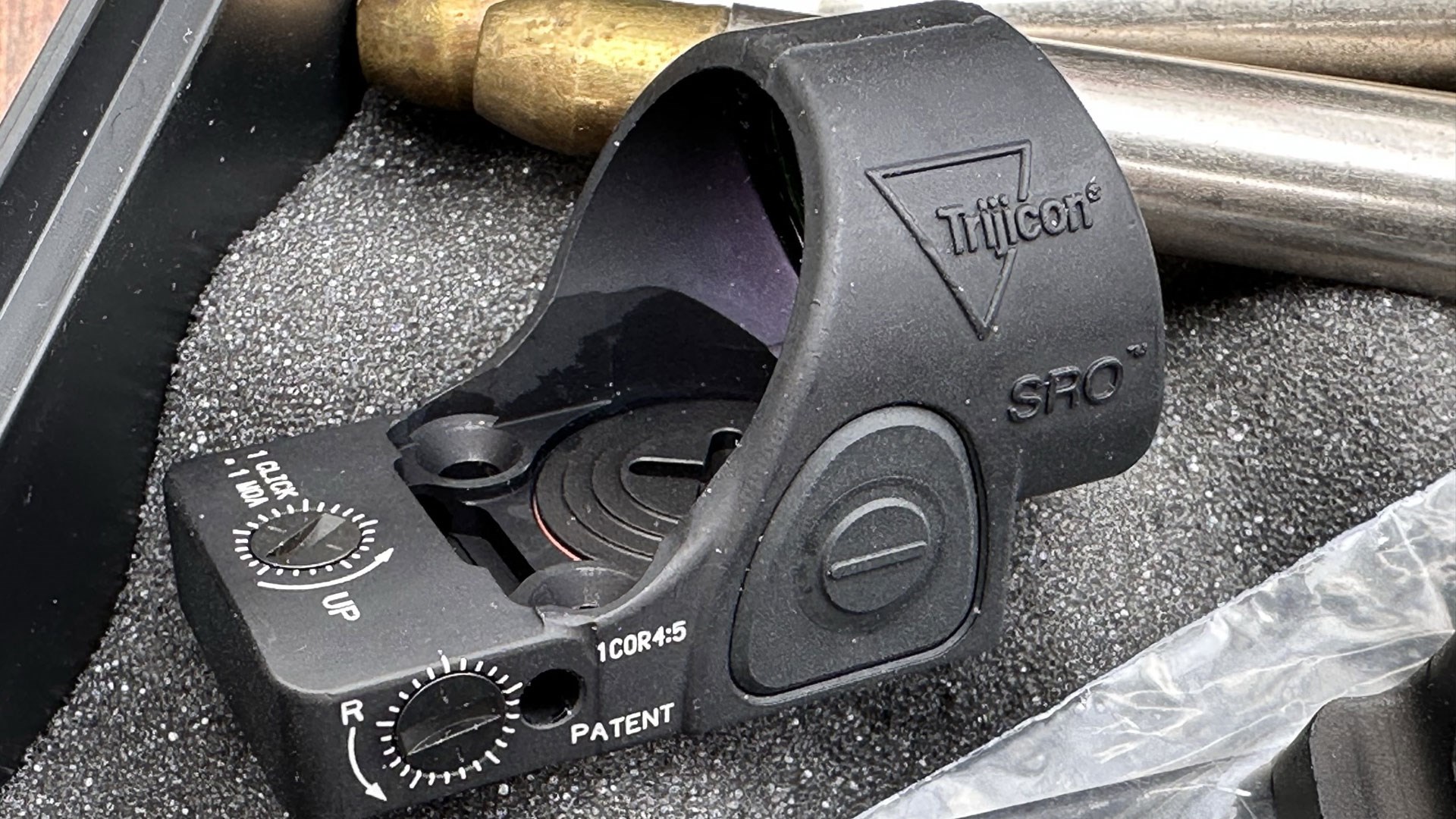
When I commented on the fit and feel, Mike smiled and showed me the work he had a gunsmith do on the stock. The buttstock aligned with the barrel, which he called straight stock. I was immediately intrigued and wanted to know more. Being familiar with firearms, I had not paid enough attention to the stock design and how it can help a hunter or shooter.
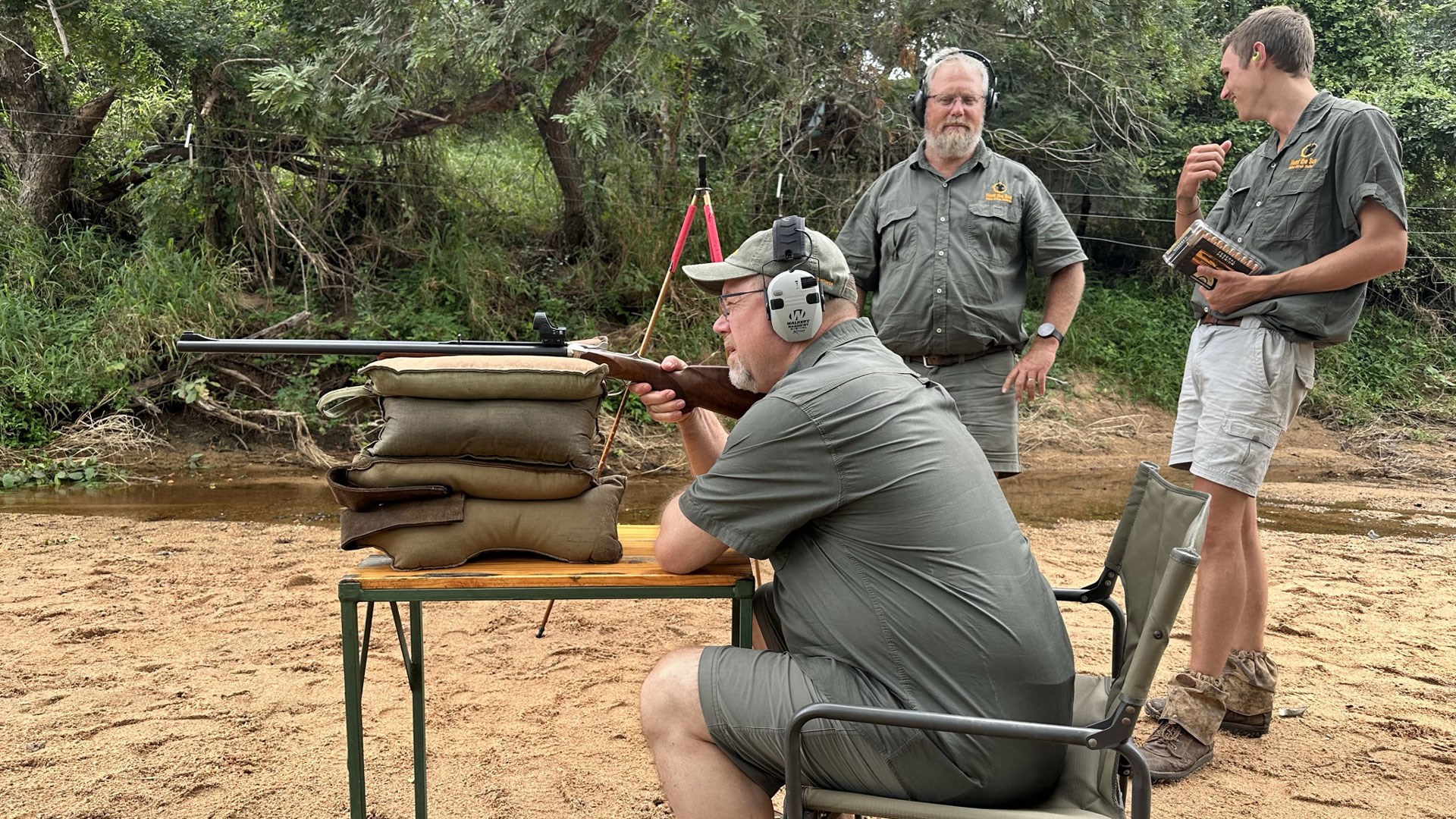
The moment took me back to a Texas mixed-bag hunt the previous fall. I used a Springfield Armory Waypoint rifle with an AG Composites stock with bedding pillars and multiple QD pockets to add a sling. I shot two deer, seven coyotes, a bobcat and more hogs than I had fingers to count. Target acquisition and accuracy were notable. The stock had a vertical grip, also called a straight-style stock. The Trijicon Credo HX 2.5-15x42mm riflescope was perfectly aligned with my eye, allowing me to keep up with the fast action and make every shot count. The stock design was starting to make sense.
Recoil and Control
Accuracy comes with recoil control and the vertical stock on the Waypoint made a noticeable difference. The long-range rifles I have played with all had vertical-grip stocks. There is nothing wrong with sporter-style stocks. Some advantages need to be considered, like being backpack-ready. However, they do not provide the same advantages for fast target acquisition or recoil management. The sporters look nice, but I would rather have a rifle with scars of manipulation if it means accuracy and control.

The .470 Nitro Express packed a punch with Federal Premium 500-grain Swift A-Frame bullets. However, it was much less than expected, and there was little muzzle lift, which is critical with a double gun if there is any chance of using the second barrel. The recoil was comparable to a 12-gauge shotgun with 3 ½-inch magnums. I also used a .375 Holland & Holland with the same modifications to the stock. It shot as light as most .30-caliber magnums and was used to put some camp meat on the hook the second day of the safari, with a mature impala ram.
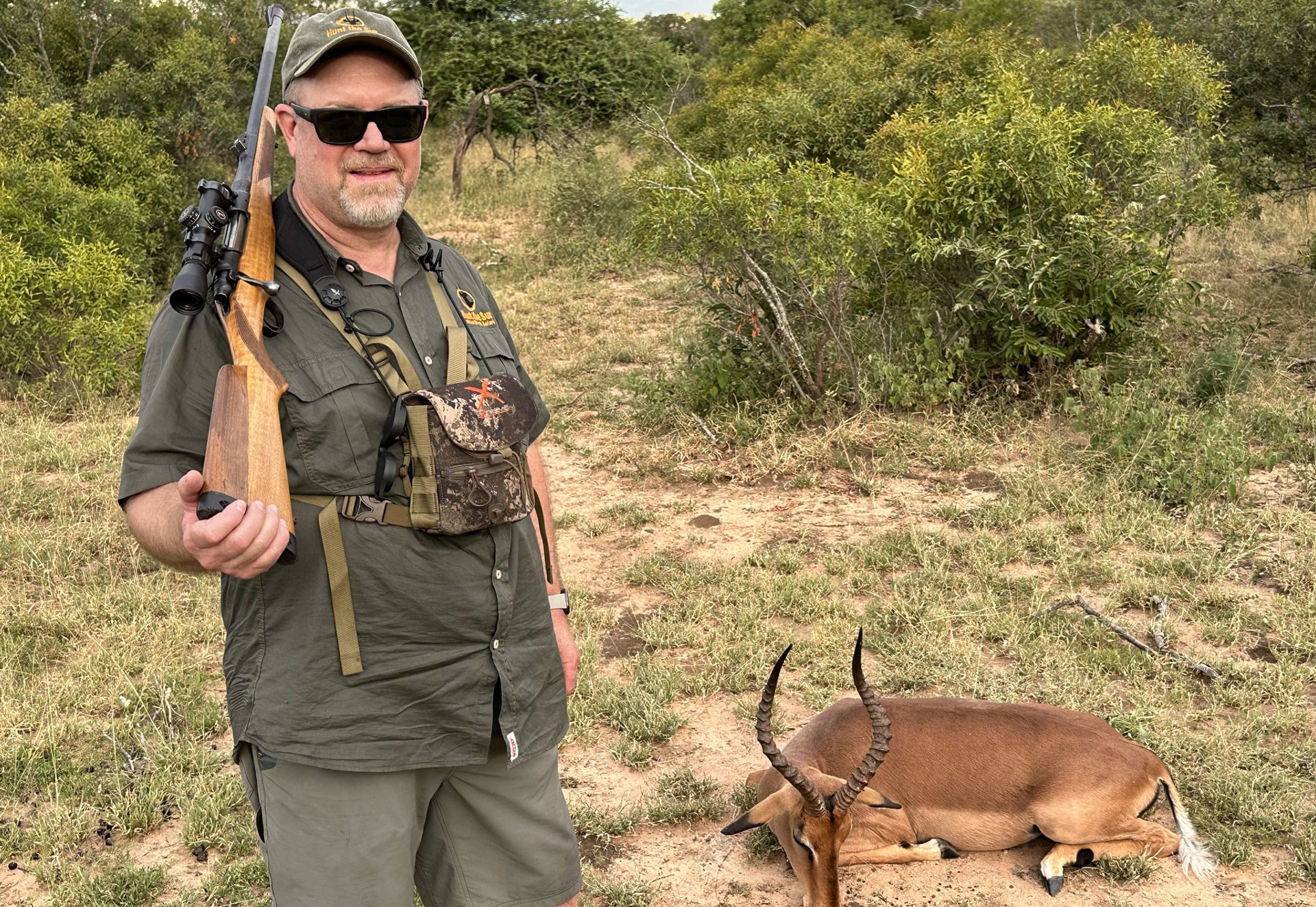
The real litmus test was hunting cape buffalo at close range. Tracking a moving animal and making the perfect shot resulted from a vertical stock that fit me perfectly. The cape buffalo was a major bucket-list achievement, but taking a massive old giraffe bull proved that Birch's handy stock alterations worked. I shot the giraffe facing me. It was a perfect heart shot, but when the bull started to gallop away, I followed up with a second shot that took out both lungs. The shots were only a second or two apart, and recovering from the recoil of the .470 Nitro Express and placing the follow-up bullet with precision sold me on the vertical-stock design.
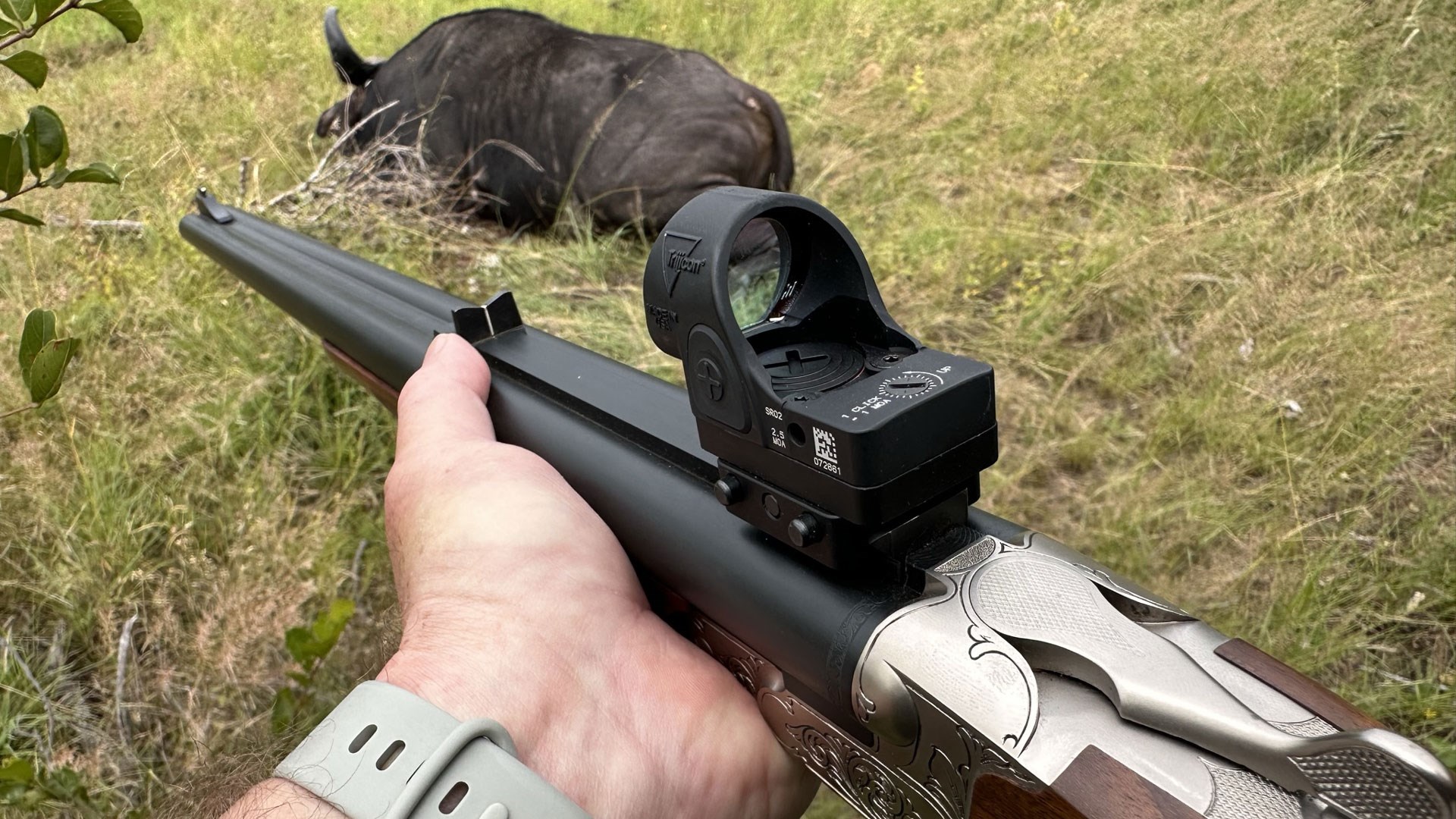
Rifle Stock Learning Curve
I was convinced the stock modifications made a significant difference and wanted to learn more. When I returned home, I contacted Matt Tandy, vice president of Operations & Sales at AG Composites, to ask questions. As suspected, vertical-grip stocks are the most popular for long-range shooting and firearm control.

Matt started by saying recoil lifts the barrel more significantly if the butt drops too fast. A straight stock has very little drop, whereas there is ¼-inch on sportier stocks. The comb has no vertical drop, allowing recoil to flow through the stock and straight into the shoulder.
When considering a custom stock—or modifications to change or adjust the buttstock—talk about the end desire before beginning the build—like weight, or a combination of hunting and competition shooting. For example, AG Composites offers a vertical grip in 13 different models. Ergonomics and style are the most important and should feel and fit like a handshake. Straight grip and feel should help produce good shot groups, and repeatability can result. The more natural it feels to grasp the stock and raise it to the shoulder, the more accuracy and repeatability. Consider it like the natural position of your hand when you go to shake someone else's hand. Keep in mind that the verticals are typically larger and weigh more.

Does caliber matter? I learned in Africa that it does. The big calibers with a vertical stock have more weight and accommodate longer barrels. I do not know the exact weight of the .470 Nitro Express, but it was a beast.
Tandy pointed out that .300 or bigger rifles benefit from a muzzle break or vertical-grip straight stock. Other components can be added to increase the benefit, like a Pachmayr pad that helps with recoil absorption.
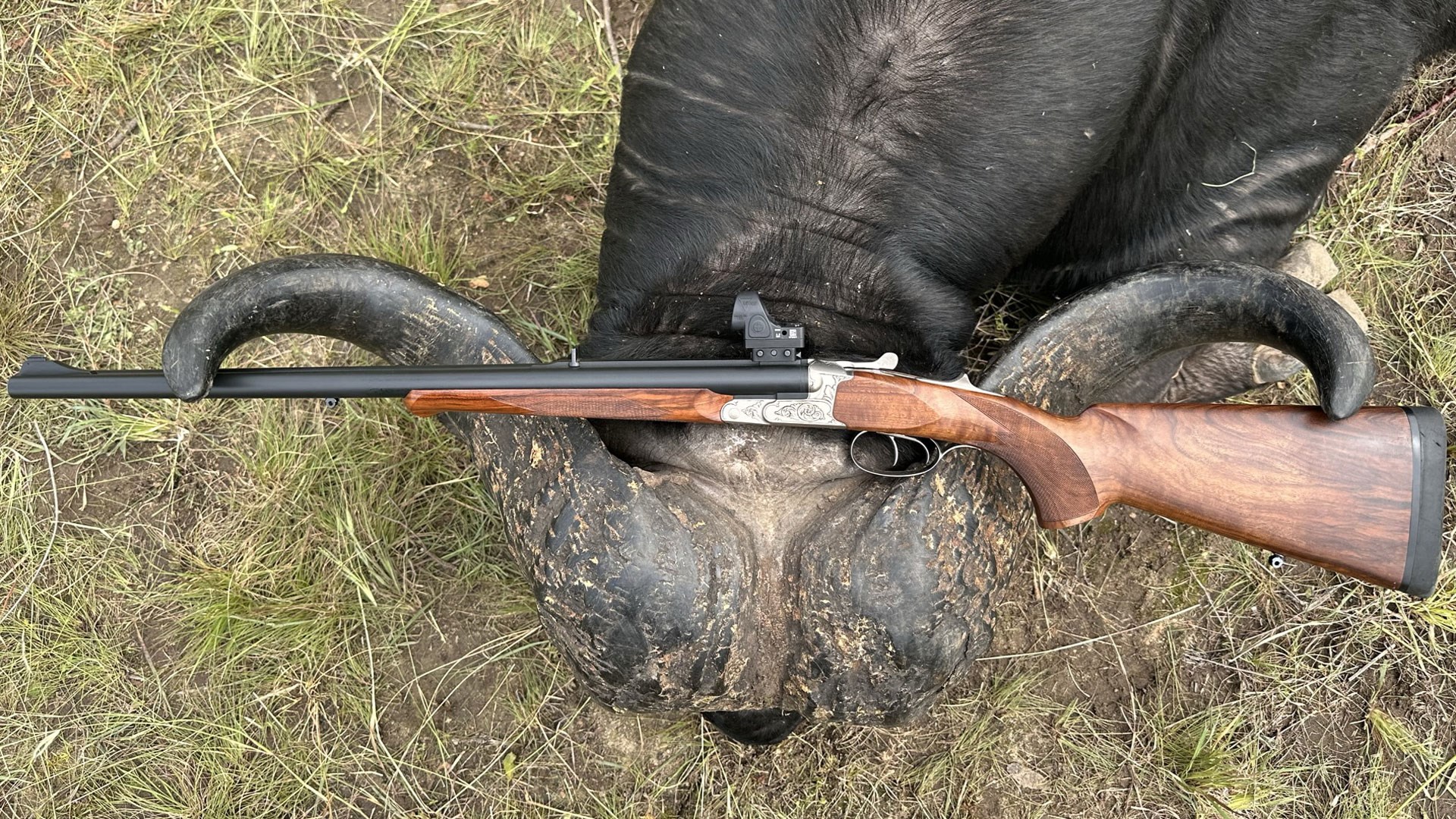
There were some interesting tidbits about stock material. I learned that recoil travels through carbon fiber with weave and is absorbed along the way. Measuring the flow and force from recoil from the lug back would be interesting. Would wood, plastic, carbon fiber, strands, fabric, or a solid mass of fiberglass reduce recoil more? There is more experimenting and learning ahead.
Seeing is Believing
A great way to see the recoil and how it affects the shooter is by using a slow-motion camera to see the energy transfer. Most cell phones have a slow-motion function to record. The recoil could lift the muzzle, and the barrel's reaction is critical. The ripple of recoil energy can also be seen in a shooter's body and how quickly they recover. Get someone to video you shooting to see how the gun and the shooter react.
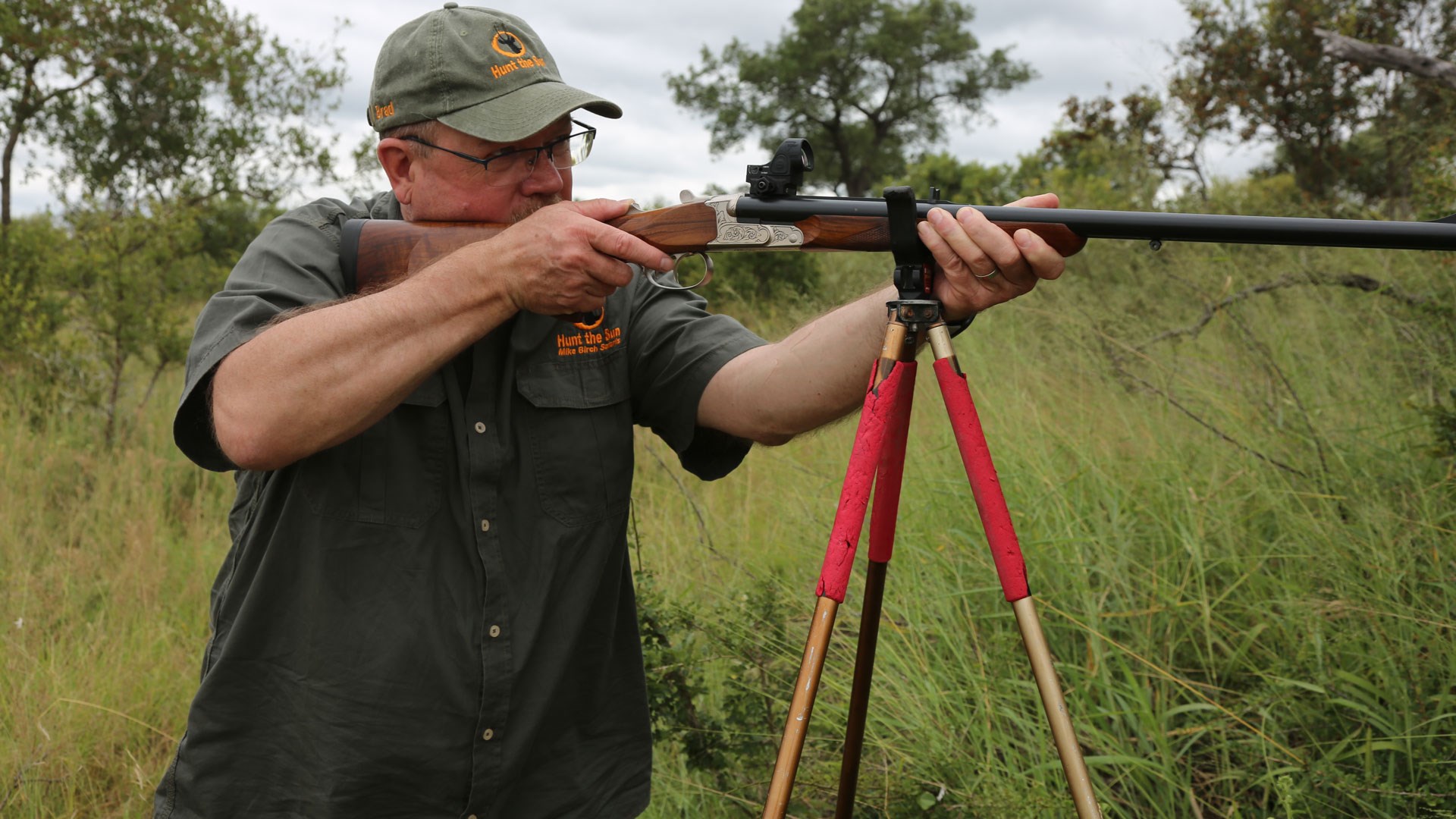
An exercise to start with would be to close your eyes, shoulder your rifle, then open your eyes and see if you are looking down the barrel. If there is no straight line of sight to a target, ask yourself what needs to change. There are no stupid questions. Understanding recoil will lead to an appreciation of managing and controlling it.
Try measuring the vertical grip and drop-in comb—how much drop is there from the bore to drop in the heel? How straight is it from the bore? The straighter, the better the recoil transfers through. Cheek weld should be considered with a drop in the comb, like with any adjustable stocks.
Parting Shots
Some North Americans are complacent and may not be aware of the benefits of a vertical stock and why it would be beneficial to make a change. Gun sales show that decisions are based on appearance and not necessarily performance. In Africa, a Professional Hunter (PH) makes a living with his rifle and quickly learns the pros and cons of knowing the business and doing everything possible to generate success. Shooting straight, fast, and accurate are critical.
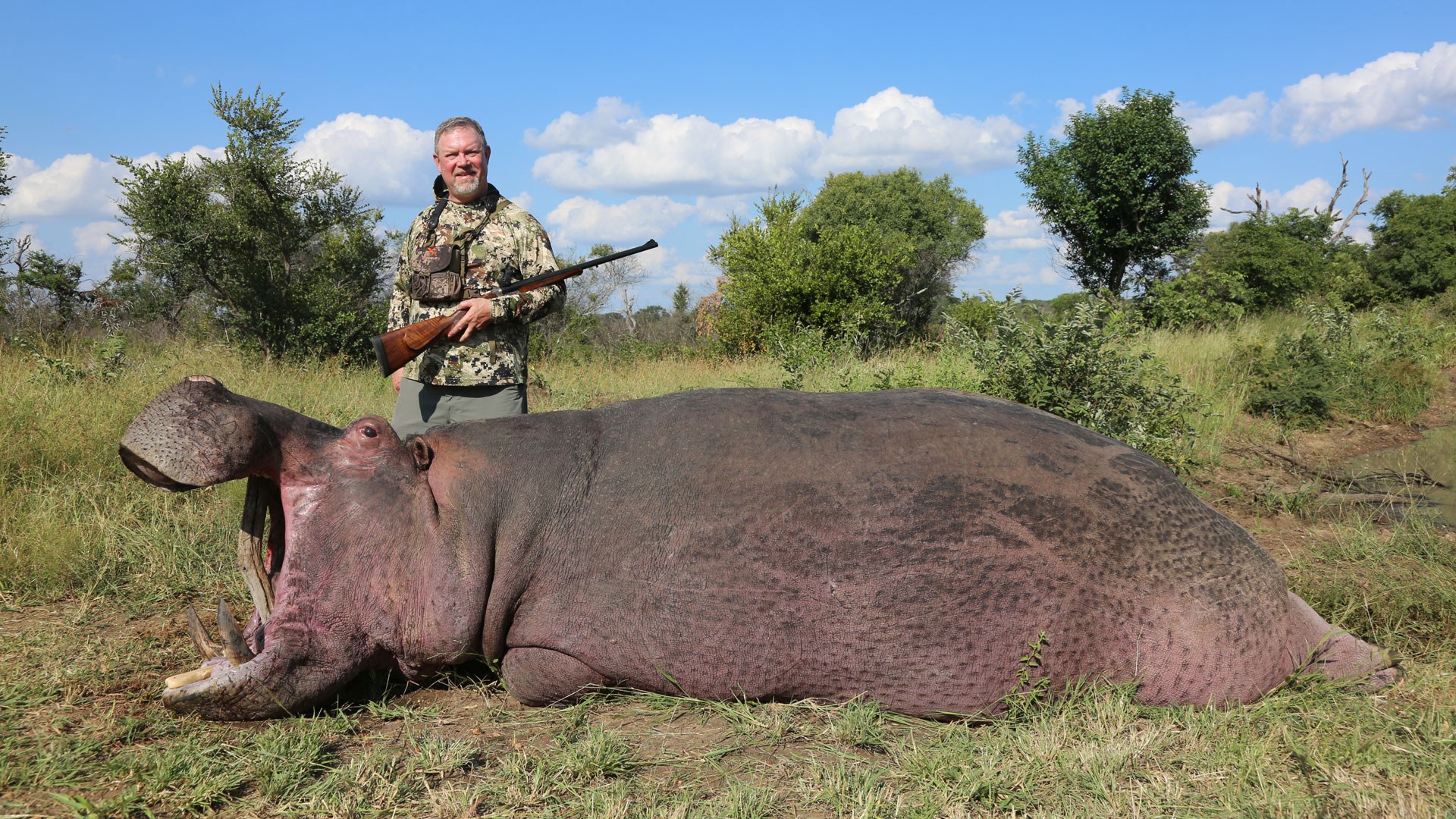
A little research showed that you can get a new Bell and Carlson stock for less than $400, or AG Composites are $700 and up. Check out Boyds Hardwood Gun Stocks in Mitchell, South Dakota, for other options.
Mike Birch Alterations
A rifle must fit you like a glove; most rifles do not come out of the box and fit properly. Mike had his gunsmith modernize his rifles for dangerous game. The first alteration was to create the straightest comb possible. The stock had come with a hogback comb. Mike wanted a straight pull off the bolt and barrel.
![]()
Crossbolts were added in the fore-end to shorten the barrel. The result was that when you pick up the rifle, it is like pointing a shotgun. It shoots where you point.
Use a rifle with a free-floating barrel. A free-floating barrel will reduce the harmonics that can cause extra recoil. The shooter should be able to pick up the rifle like a shotgun and control the muzzle. The modifications also help control the recoil.
Other Considerations
There is a correlation between stock design and felt recoil, with several factors involved. Starting from the butt pad, the pitch of the stock needs to correspond to the individual shooter's stance and build. A shooter who leans forward into the shot needs more pitch than one who stands upright. Heavy-set shooters may need a negative pitch to get full contact with the buttstock and pad.
The heavier the recoil impulse, the more important the stock design. As far as the comb line is concerned, the drop at the nose is, by necessity, below the center of the barrel, and the sights of the rifle dictate it. The more drop at heel, the more it enables a rifle to climb in recoil. Weight can offset some of the barrel climbing.
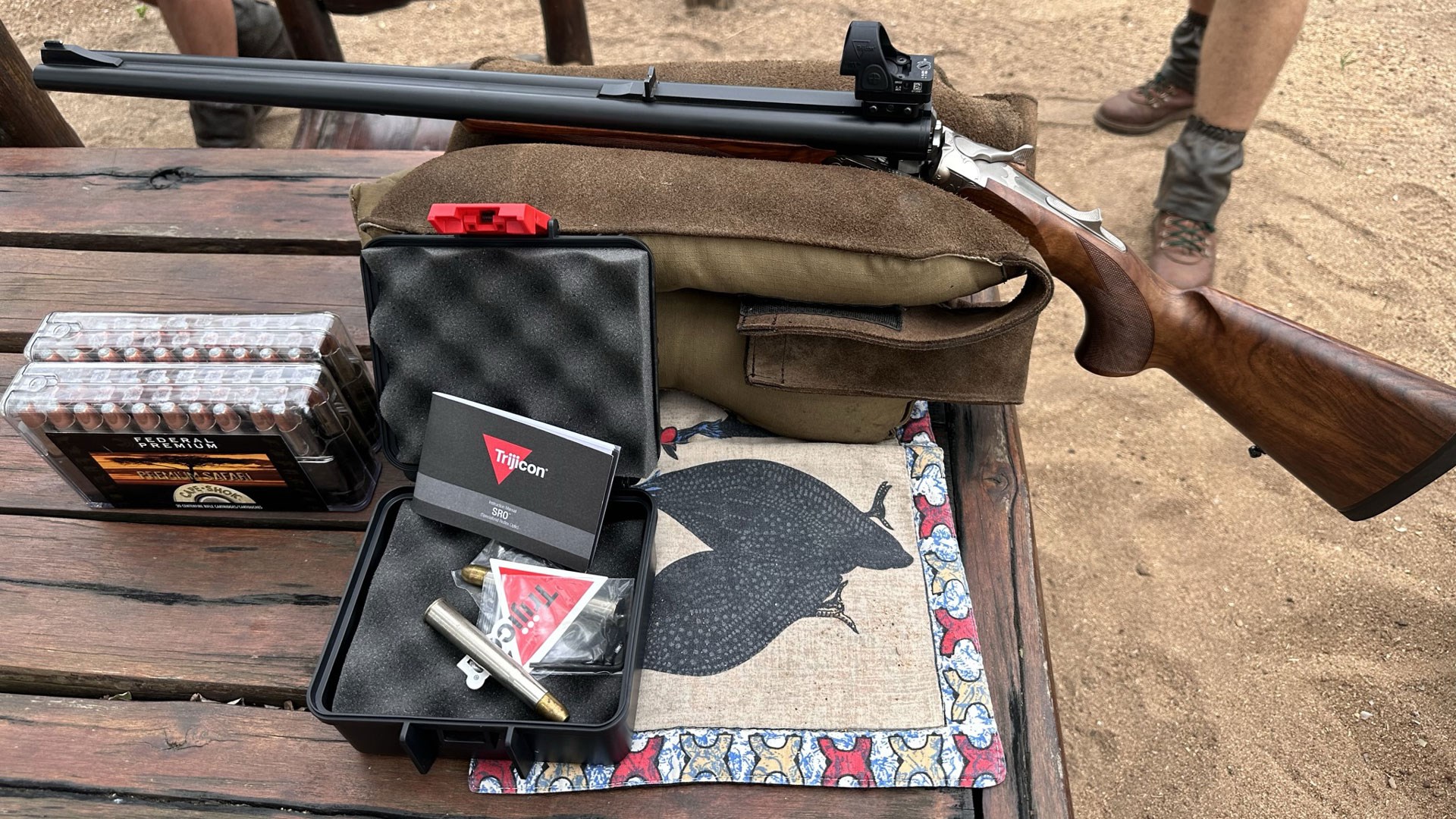
The wrist shape is another factor that can increase or decrease the grip or firm hold. The fore-end shape will also affect the grip and how firm a rifle is held.
Most factory rifles come with a length-of-pull (LOP) of 13 ¾-inches, which will fit 50- to 60-percent of shooters. That means many firearm owners have rifle stocks that are too long or short for the best fit and accuracy. Adjusting the LOP will improve the grip, manage recoil, and shooters will quickly appreciate the results.
A ¼-inch drop on the heel can make a big difference. If you want improved firearm control and accuracy, investigate your stock design and options that could make it better.

























